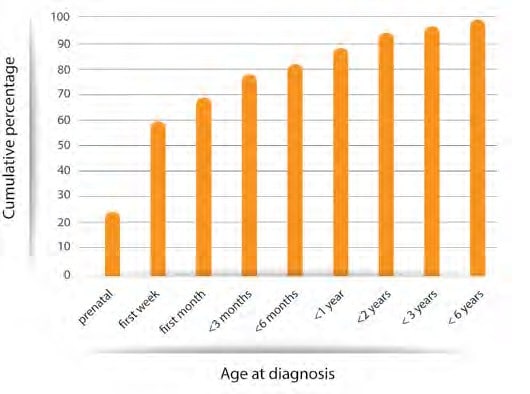3.6 Inclusion Criteria
On this Page
Expected time: 1 hour
Criteria
Inclusion criteria are the specific factors or characteristics that define whether a fetus or neonate with a congenital anomaly is included in the surveillance programme. Inclusion criteria are set by individual programmes and most likely will vary between programmes and countries.
Possible responses:
- Age at diagnosis
- Type of pregnancy outcome
- Birth weight/gestational age at delivery
- Maternal residence
Possible response:
- To define the source population in which the cases occur
Age at Diagnosis
Age at diagnosis is a critical component of the case definition. Many countries may have different age inclusion criteria. The higher the age threshold, the greater the ability to identify additional anomalies. This is especially true for internal congenital anomalies that might not be evident at birth, such as heart defects. The higher the age threshold, the greater a programme’s expense because additional resources may be needed for follow-up. Spontaneous abortions should not be included in the numerator or in the denominator. It will be hard to identify congenital anomalies in most spontaneous abortions and almost impossible to have a denominator for them.
Group Discussion 3.4
Please look at the following graph, showing an example of how age at diagnosis has been used. Researchers examined the age at diagnosis for all congenital anomalies reported to the Western Australian Birth Defects Registry from 2000 to 2001.
Fig. 3.2. Cumulative percentage of cases of major congenital anomalies by age at first diagnosis

Source: reproduced by permission of the publisher from Bower et al., 2010 (13 ).
Possible responses:
- Nearly 60% of all major congenital anomalies reported to this registry programme are diagnosed during the first week, nearly 70% during the first month, nearly 90% during the first year, and nearly 100% by the sixth year of life.
- Prenatal diagnosis is not able to identify all congenital anomalies.
- The congenital anomalies that take longer to identify are probably not visible at birth.
- It is important to notice that most congenital anomalies are captured in the first year of life.
- This graph is for all congenital anomalies under surveillance and reported to the programme; if it only included external congenital anomalies, the graph would probably look very different.